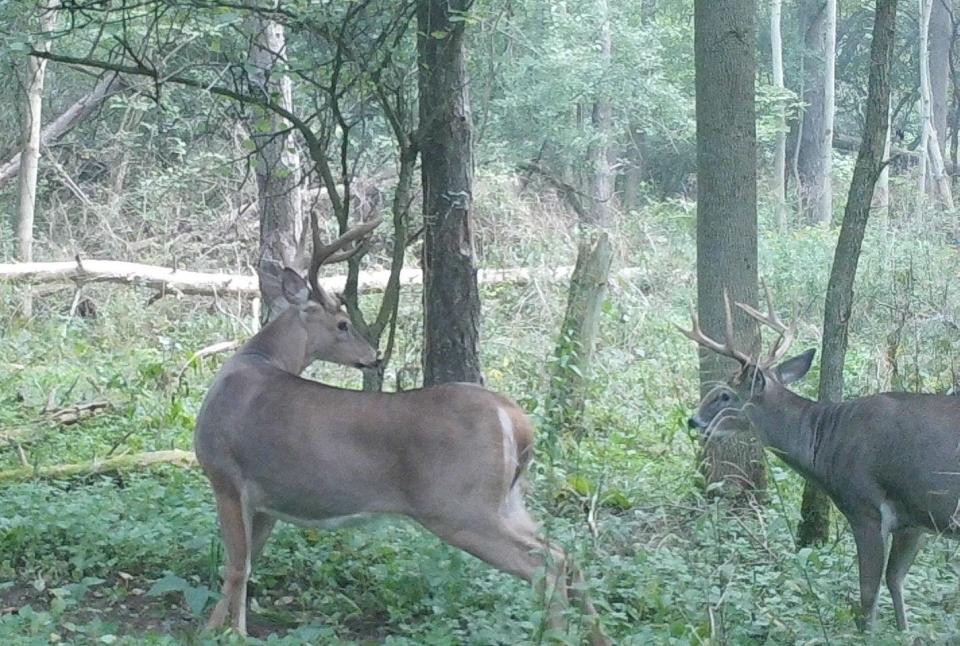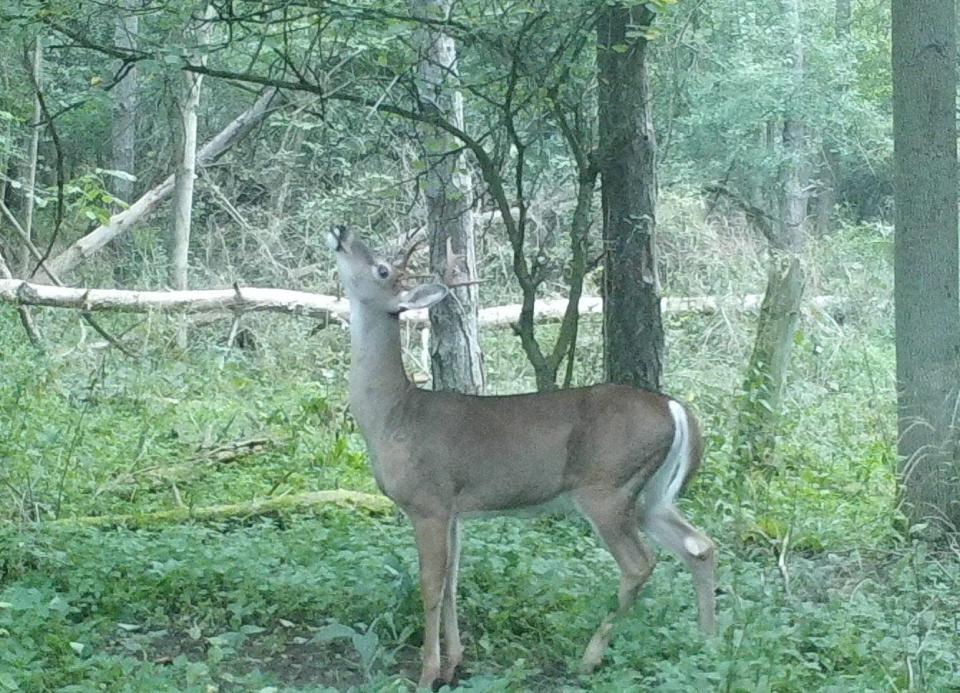Whitetail bucks are shedding velvet in September, creating different types of buck rubs
Early September here in the Northeast and Midwest signals the time when whitetail bucks begin the process of shedding what we call velvet, covering their antlers.
The brownish, kind of hairy antlers of just a few weeks ago in mid-August now quickly transform into the iconic bone-white, multi-tined, dagger-sharp antlers we expect and as hunters, dream of.
The shedding of velvet happens quickly.
Bucks shed velvet in a day or so, as their bodies respond to an increase in male hormones, driven by the shortening of days and corresponding decrease in daylight.
This year's fall equinox (when the night becomes the same length as the day, Sept. 23, 2023) occurs about a week before the September Full Moon (Sept. 29, 2023) called the Harvest Moon because it is the closest Full moon to the Autumnal Equinox.
The timing of when bucks shed their velvet

Bucks do not shed their velvet each year on the same date on our calendars any more than anything in nature occurs on exactly the same date each year … going by our calendars.
However, the moon is full every 29.5 days.
Actually, the word “month” comes from the word “moon,” or has the same Latin and Old English derivation (Mona and Mensis).
This photoperiodic (light-driven) variance in many animal behavior-timings includes the fall rut (breeding time for deer), the subsequent birthing of fawns, the shedding of velvet, and the dropping of antlers.
Bucks are individuals, so they do not shed their velvet at the same time any more than they drop their antlers during the winter at the same time.
But often, older bucks with larger racks tend to shed their velvet earliest, while smaller, younger animals retain their velvet a bit longer.
But usually here in the Northeast and Midwest, most bucks will have shed their velvet by mid-September.
Deer antlers vs. horns
Many of us tend to call deer antlers "horns," but this colloquialism is technically incorrect as horns are not antlers, though their structure and use seems quite similar on the surface.
Antlers are often branched while horns are never branched.
Typical critters with true horns are cows, sheep, antelope and goats, to name a few.
While a few species that grow antlers are of course deer, elk and moose.
Antlers are annually grown each year, shed, drop, or fall off, then are grown again the following year.
Horns are retained throughout an animal's life and if broken off, are usually not regenerated or grown back. Horns have two parts, an inner core of bone and an outer shell of a keratin, the same substance in hair and fingernails.
Antlers actually are generated to a large percent from bone in the buck's ribs and sternum and grow out of the skull bone.
More: Will a fisher attack a house cat? This predator becoming more widespread in New York state
How bucks grow big antlers
Bucks undergo a kind of osteoporosis each summer and early fall as the chemistry in their bones migrates through this process of antler-genesis to the top of their heads ... and then is slowly replaced, the minerals and elements needing to be been drawn out of their ribs and sternum.
Big antlers, especially in large whitetails, moose and elk, take a lot of energy and nutrient reserves out of an animal.
Antler velvet is peeling off our wild whitetail bucks in early September, and is often eaten by the buck as it carefully rubs its antlers on a sapling, or small tree.

Some velvet simply drops to the forest floor and can be found at the base of one of these early rub sites.
Then, as soon as the velvet peels or is rubbed off, bucks begin leaving their iconic white scars in the forest, rubbing their newly hardened antlers and creating what we call “buck rubs.”
More: Deer hunters: Here's when you can take advantage of the first rut this fall
The different kinds of buck rubs
There are different types of buck rubs, on many different varieties and sizes of trees.
Some are aggressive rubs, made by a buck with an attitude, and never visited again. Other rubs are termed “signpost rubs” where bucks parade day and night to the same scarred up tree to leave glandular scents from their foreheads, kind of like an olfactory-based internet message board for each other.
Also, whitetail bucks begin sparring with each other with freshly polished antlers, reinforcing the pecking order and dominance hierarchies.
As the breeding season, or rut, nears in late October and November here in the Northeast and Midwest, this clashing of now bone-white antlers becomes ever more serious and sometimes evolves into serious fights with injuries to the combatants.
— Oak Duke writes a weekly column.
This article originally appeared on The Evening Tribune: Whitetail bucks shed velvet, rub on trees in September. What to know

